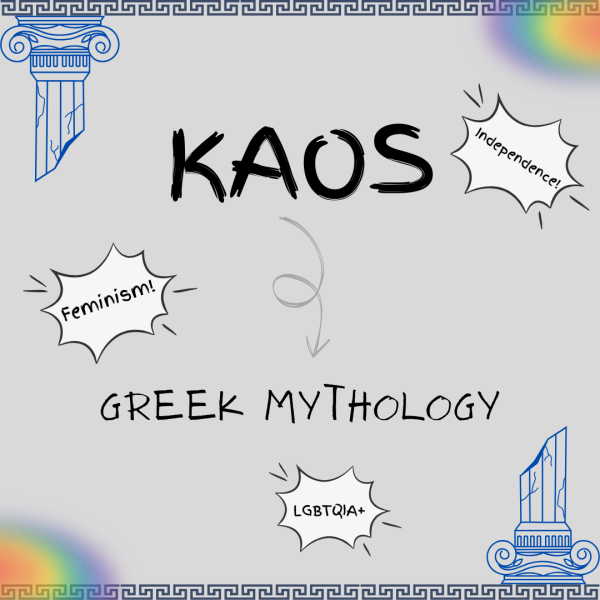Netflix’s new, original show “Kaos” is a great modern take on Greek mythology that sheds light on corruption and sexism often overlooked by Hollywood media.
Set in a modern-day Crete, stylized as Krete in the show, where Greek mythology is a widely accepted religion, the show follows the lives of three normal humans — Eurydice, Caeneus and Ariadne — as they unknowingly cause the downfall of Zeus, egged on by Prometheus and Dionysus. Together, they realize the gods are corrupt and their promised afterlife isn’t what they originally thought.
Despite already knowing the endings of the myths, the show constantly kept me on the edge of my seat. The storylines all interconnected into a surprise twist ending that shocked even an amateur film connoisseur like me. Each of the gods differed from their stereotypical portrayals. In this rendition, Zeus is the villain, and Hades is one of the only gods who understands his corruption.
The choice of making Zeus a villain makes this show more interesting than other Greek mythology entertainment. Jeff Goldblum’s portrayal of Zeus carries the show. His mannerisms and interactions with other characters draw in the audience. Goldblum clearly worked on his character motives, so he could steal the scene with a simple eyebrow raise. By combining satire with evilness, Goldblum crafted a truly horrifying but entertaining villain.
A detail I noticed throughout the show was its use of color to emphasize the story. While in the underworld, the show was completely black and white, contrasting with the bright colors used to portray Krete. As the show progressed and chaos reigned, Krete’s vibrance faded. Color demonstrates contrast in the Gods as well. Hera and her minions exclusively appear in yellow, the Greek color for sadness and jealousy, and Dionysus wears green and purple, representing intoxication and rebirth.
As “Kaos” retells iconic myths from a modern lens, it proudly displays independent female characters. Ariadne’s storyline takes a feminist position on political and family issues. Throughout the show, Ari showcases more ambition and brains than her father and ultimately stabs him in a rage after he kills her brother. After Ari overpowers her father, she takes over his position as president and desegregates Krete.
Another notable feminist character is Persephone. She has a choice in marrying Hades, as opposed to her kidnapping in the original myth. In this version, she is more respected and confident than Hades and eventually raises awareness about the gods’ corruption.
Unlike other recent shows, the female characters in “Kaos” are true feminists, not a stereotypically strong character who panders to the audience. Instead of writing female characters to attempt to fix decades of sexism, showrunner Charlie Covell writes well-developed characters that fix the practical problems in front of them. This should be the basis of any show, but it seems harder to find nowadays.
Along with strong female leads, the racial makeup and LGBTQIA+ representation in “Kaos” is refreshing compared to the recent Hollywood trend. Diversity is not forced but comes up naturally. One of the main characters is Caeneus, a transgender guide in the underworld. In the original myth, he is also transgender, but he is not accepted and eventually murdered. In the show, his gender identity is only a small part of his overall character. In addition, gay relationships are not fetishized, but treated the same as straight partnerships.
With the cultural movement of making entertainment for money or fame, recent shows seemingly lost realistic characters. Lately, writers are constantly creating cookie-cutter characters they already know people will enjoy. What makes “Kaos” especially worth watching is seeing characters break through the mold to show realistic emotions, dialogue and actions.
From its plot and characters to filmic choices, “Kaos” breaks down the Hollywood perception of gods into a modern retelling that is a must-see for Greek mythology fans. If you enjoy procrastinating, I recommend watching “Kaos.”















